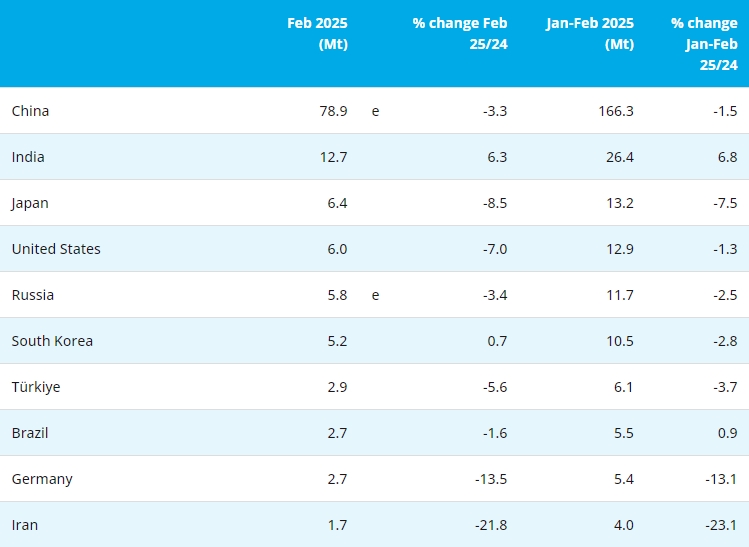[Ferro-Alloys.com] The switch from fossil fuels to low-carbon sources implies a massive leap in demand for metals and other commodities, IMF said, warning that lagging investment in production is causing shortages and sharp increases in prices for the materials.
Under the International Energy Agency’s Net-Zero by 2050 Roadmap, the share of power from renewables needs to rise from to 60% by mid-century from the current 10%, led by solar, wind, and hydropower, the International Monetary Fund’s experts noted in a blog post. They explained it would cause “unprecedented metals demand in the coming decades.”
A typical electric vehicle battery pack, for example, contains eight kilograms of lithium, 35 kilograms of nickel, 20 kilograms of manganese and 14 kilograms of cobalt, while charging stations require substantial amounts of copper. For green power, solar panels use large quantities of copper, silicon, silver and zinc, while wind turbines require iron ore, copper, and aluminum.
Developing a mine often takes a decade or more
It means that replacing fossil fuels with low-carbon technologies would require an eightfold increase in renewable energy investments and cause a strong increase in demand for metals. However, developing mines is a process that takes a very long time – often a decade or more –and presents challenges at both the company and country level, the authors pointed out.
Biggest lags are projected for graphite, cobalt, vanadium, nickel
Given the projected increase in metals consumption through 2050 under a net zero scenario, current production rates of graphite, cobalt, vanadium, and nickel are showing a gap of more than two thirds versus the demand. The supply of copper, lithium and platinum is also inadequate, with a 30% to 40% gap versus demand.
The price of lithium is seen rising 150% before the end of the decade to USD 15,000 per metric ton
The IMF has already warned that soaring metal prices may delay the world’s energy transition. Metal prices have already seen large increases as economies reopened, highlighting a critical need to analyze what could constrain production and delay supply responses, the authors added.
For some minerals, existing reserves would allow greater production through more investment in extraction, such as for graphite and vanadium. For other minerals, current reserves could be a constraint on future demand – especially lithium and lead, but also for zinc, silver, and silicon.
Recycling can increase supply
Firms can expand reserves through innovation in extraction technology and further exploration efforts may lead to increasing the future supply of metals to meet future demands. Moreover, metals recycling can also increase supply. Reuse of scrap metals only occurs on a large scale for copper and nickel, but it’s now increasing for some scarcer materials like lithium and cobalt, the experts underscored.
The supply gap may push the price of lithium, used in batteries, from its 2020 level of USD 6,000 per metric ton to USD 15,000 before the end of the decade and leave it elevated through most of the 2030s, the IMF estimated. Cobalt and nickel prices would also see similar surges.
Single countries account for majority of supply of several strategic commodities
One complicating factor is that some important supplies are generally very concentrated. This implies that a few producers will benefit disproportionately from growing demand. Conversely, this lays bare energy transition risks from supply bottlenecks should investments in production capacity not meet demand, or in case of potential geopolitical risk inside or between producer nations.
For instance, China controls more than half of the world’s supply of vanadium, graphite and aluminum and it is dominant by far in the lead market. Australia is the source of almost 80% of lithium, and the Democratic Republic of the Congo is responsible for nearly 70% of global cobalt output.
Commitment to better environmental scores helps mining companies unlock more green financing, an IMF study showed.
- [Editor:tianyawei]

/E鐵合金企業(yè)庫(kù)4.jpg)

 Save
Save Print
Print Daily News
Daily News Research
Research Magazine
Magazine Company Database
Company Database Customized Database
Customized Database Conferences
Conferences Advertisement
Advertisement Trade
Trade








?bào)/2024/QQ截圖20250402170922.png)
?bào)/2024/微信圖片_20250328161757.jpg)


 Online inquiry
Online inquiry Contact
Contact

Tell Us What You Think